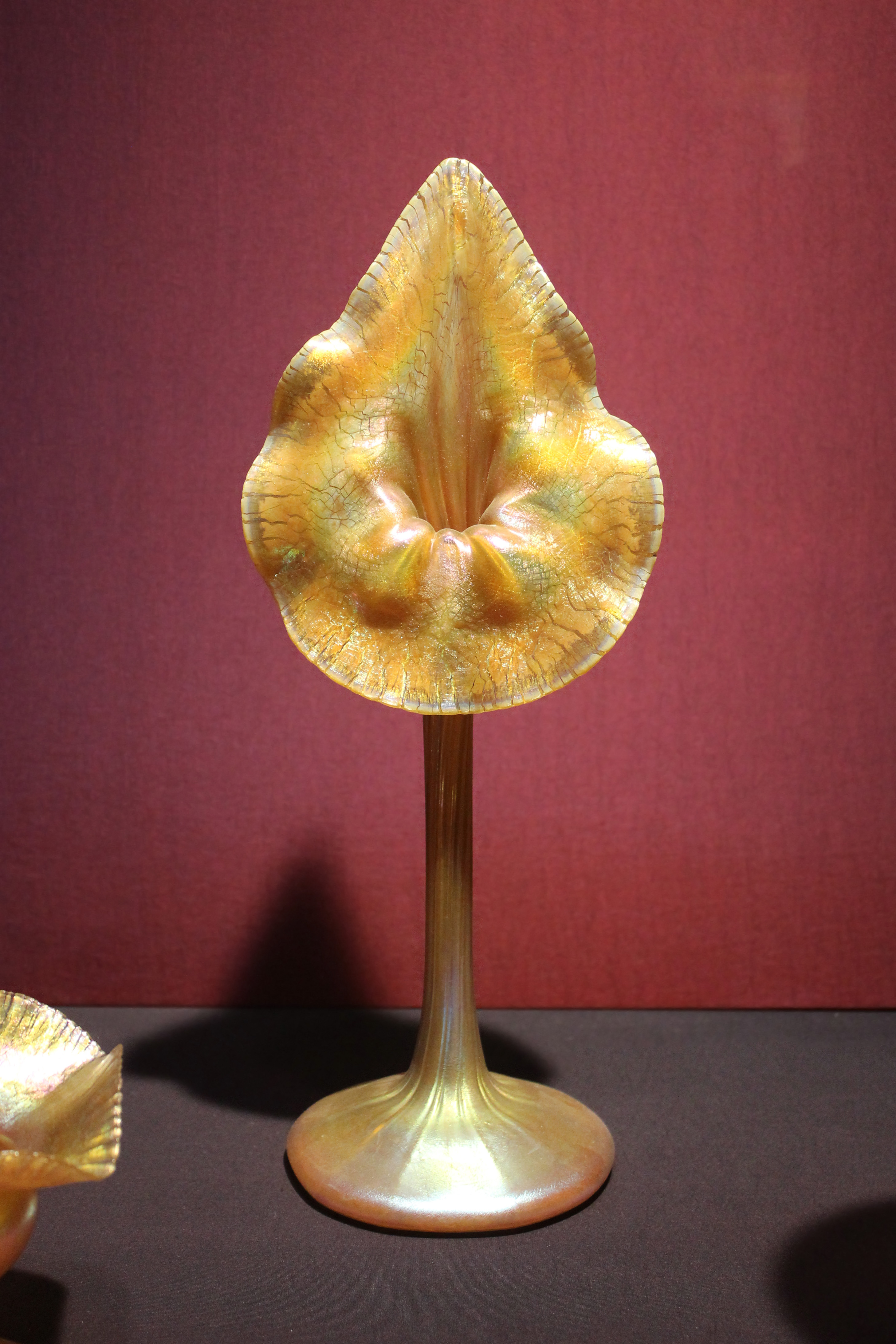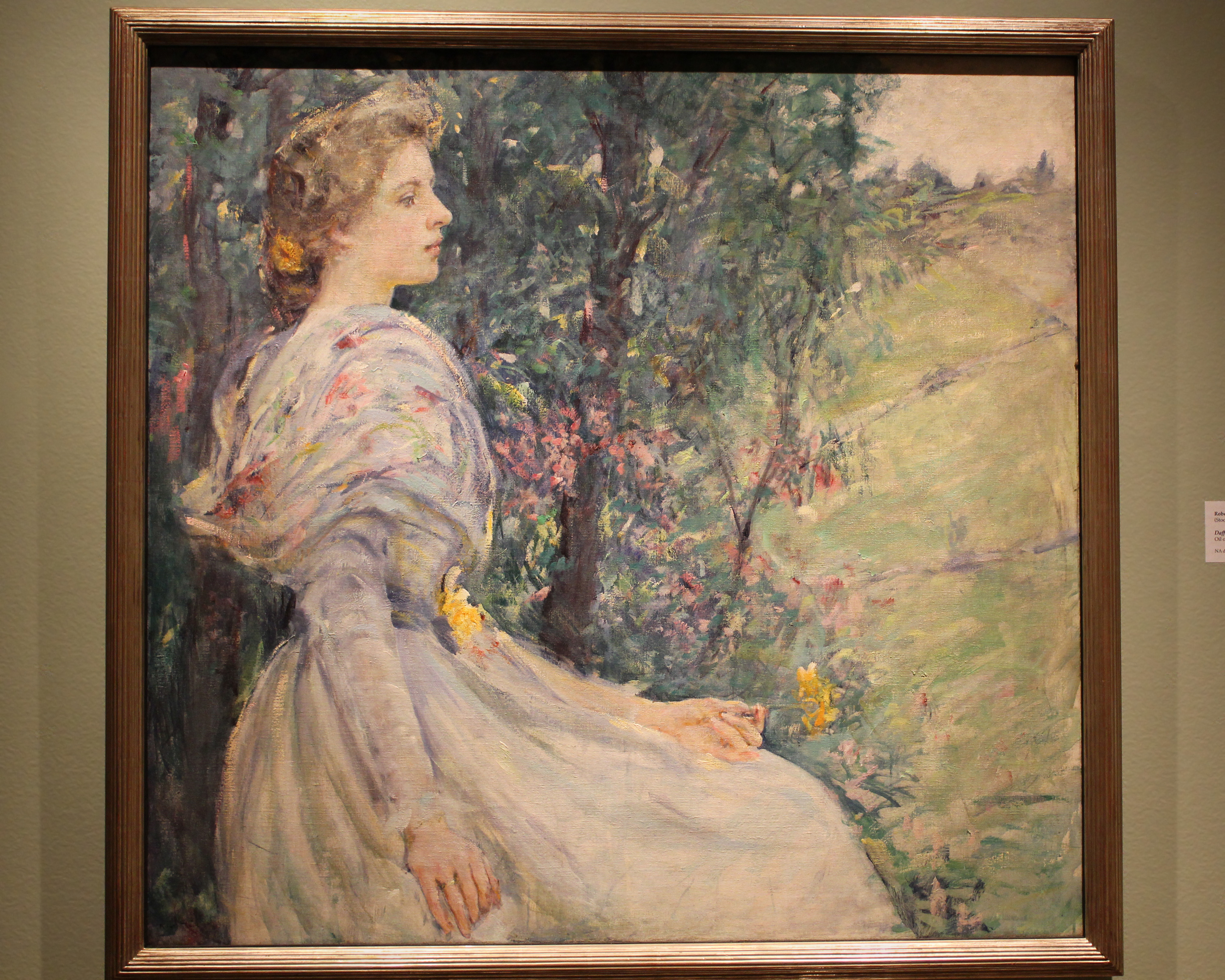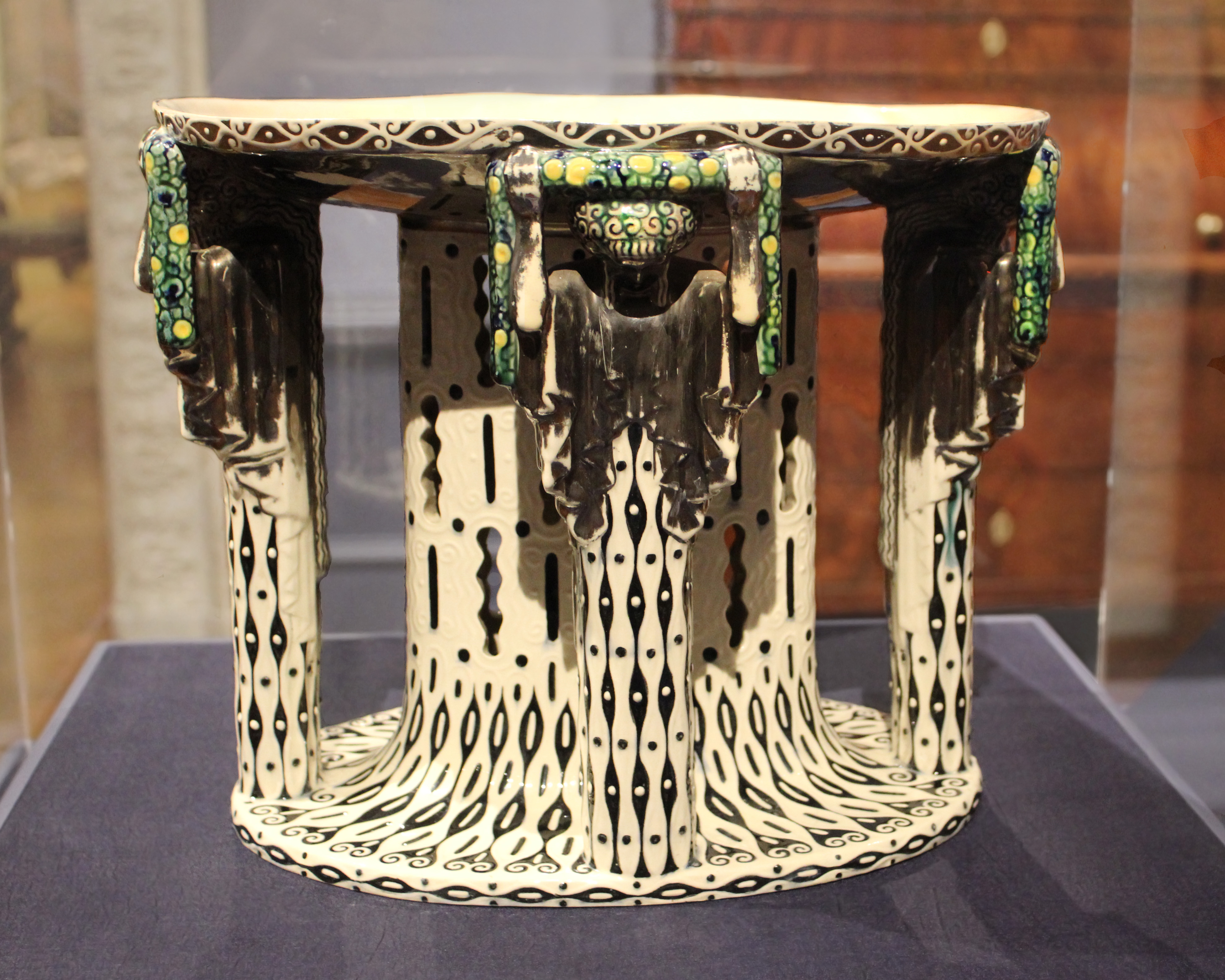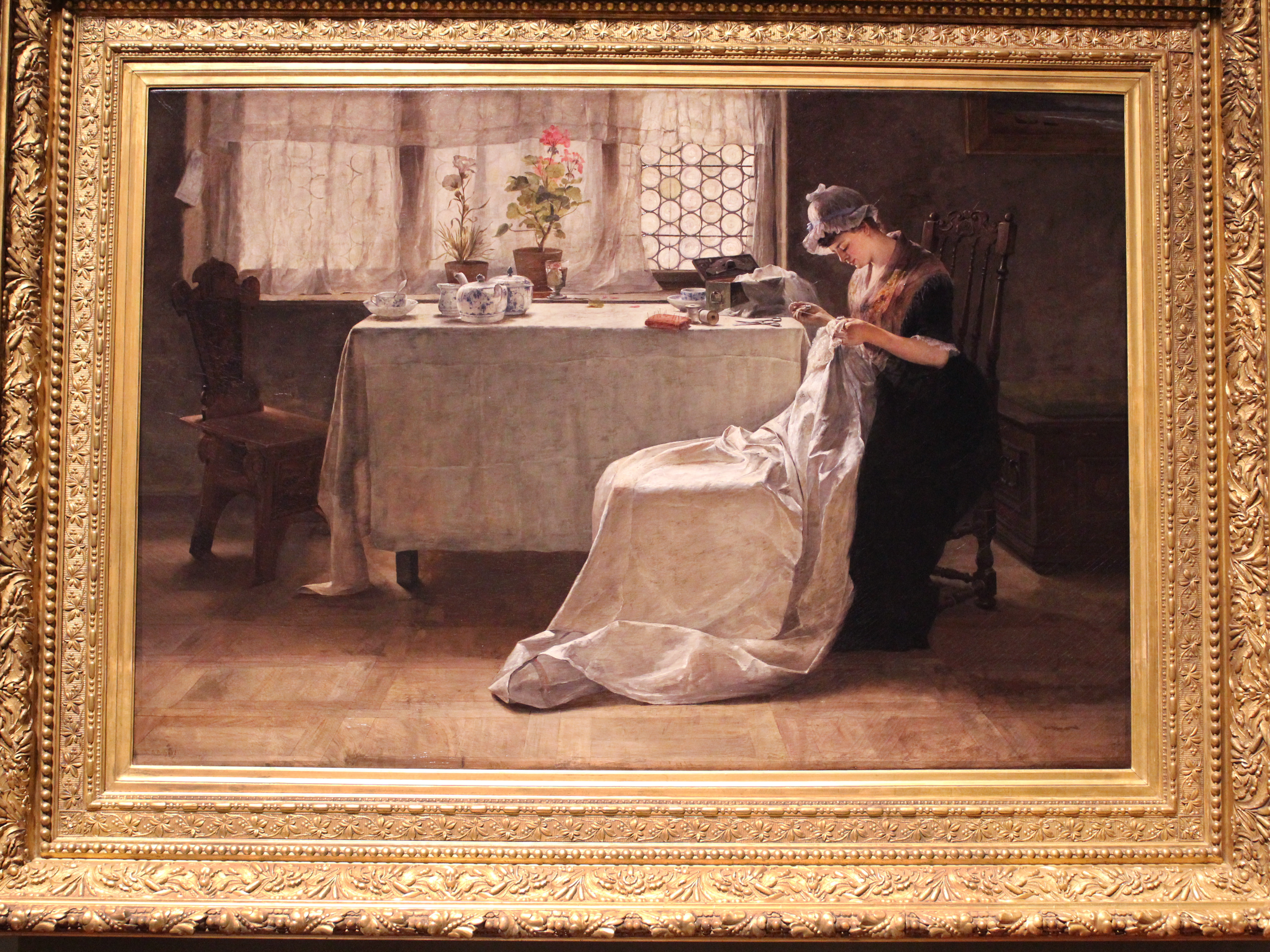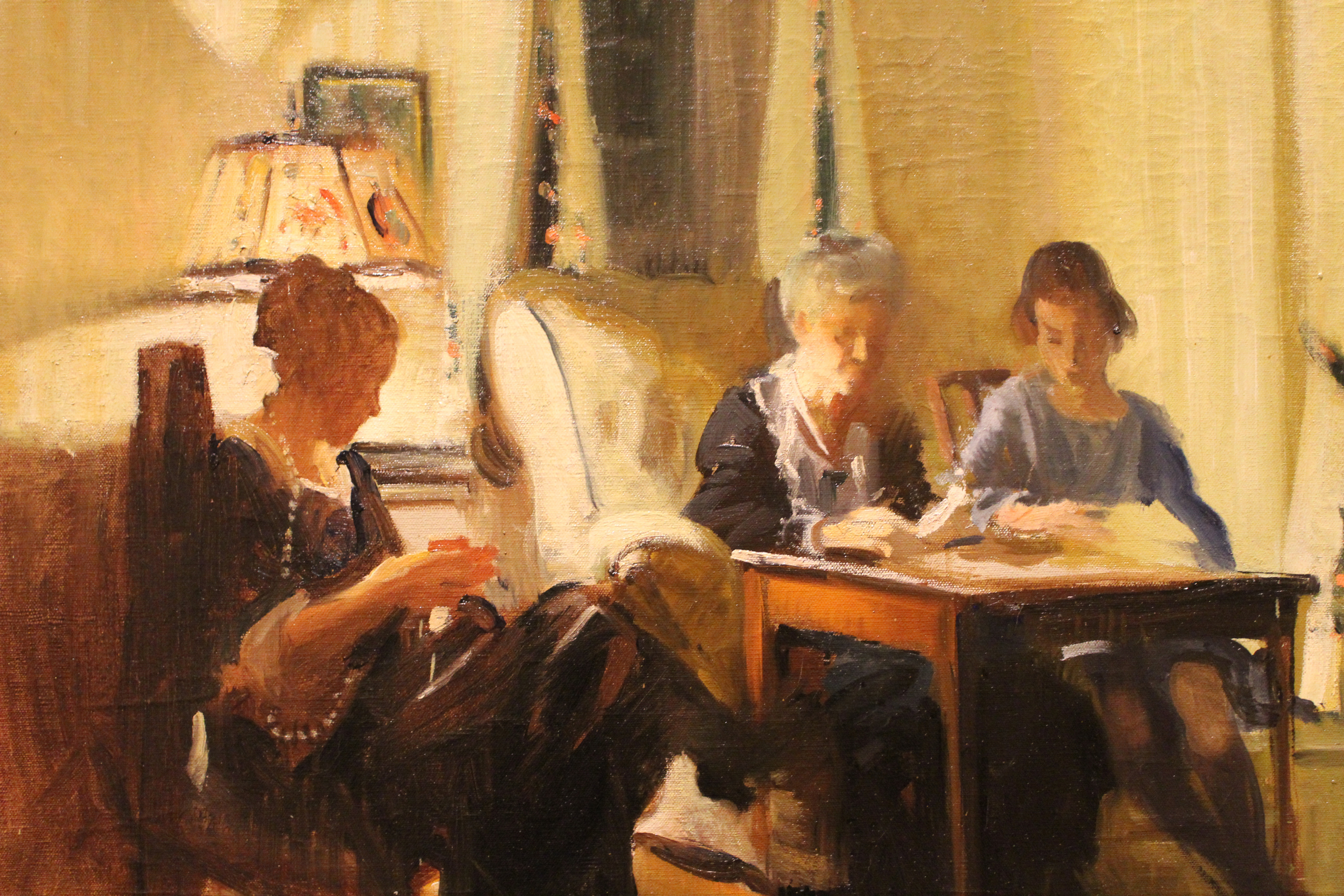
Sunday, May 19, 2019
Even More Beauties Seen at Dayton Art Institute
6:35am
Starting today with the late 19th century, we have beautiful ladies, beautiful nature, and beautiful ladies out in nature:
 A Willing Captive, 1888 Frederick S. Church, ( Grand Rapids, Michigan 1842 - 1923 NYC, New York) Oil on canvas Gift of Mr. John B. Hayward, Dayton Art Institute #1931.31 Church is "especially known for his (often allegorical) depiction of animals." "Aside from his numerous animal drawings, Church dealt with many other themes, usually in a "cheerful and fanciful" mood, such as a "Holiday Series" including "A Halloween illustration of dainty witches crouched by a cauldron under a smoke-filled sky, a Thanksgiving image of a young girl driving turkeys, and a depiction of Christmas morning on the bottom of the sea as little mermaids open their gifts and polar bears dance arm-in-arm with a lovely young woman."(From Wikipedia)
Tiffany Studios existed from 1878 to 1933 in New York, "by Louis Comfort Tiffany and a team of other designers, including Frederick Wilson and Clara Driscoll." This Jack-in-the-Pulpit vase is of Tiffany's Favrile glass, which has a unique iridescence, meant to evoke "the wings of certain American butterflies, the necks of pigeons and peacocks, the wing covers of various beetles." according to Tiffany.(From Wikipedia) |
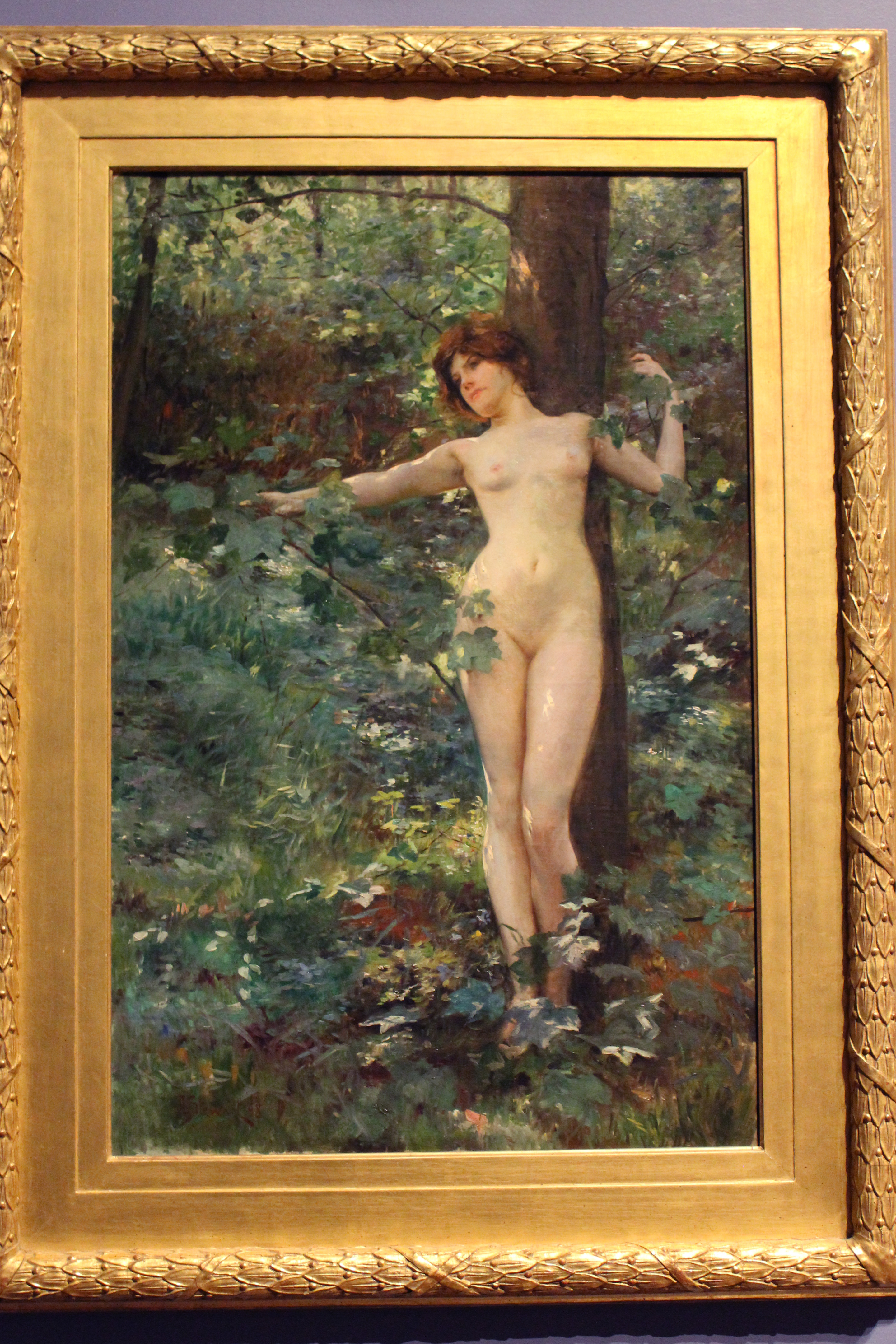 Grand Matin (Break of Day), 1898 Julius LeBlanc Stewart, (Philadelphia, Pennsylvania 1855 - 1919 Paris, France)) Oil on canvas Lent by the Dicke Collection, Dayton Art Institute #L2.2018.2 |
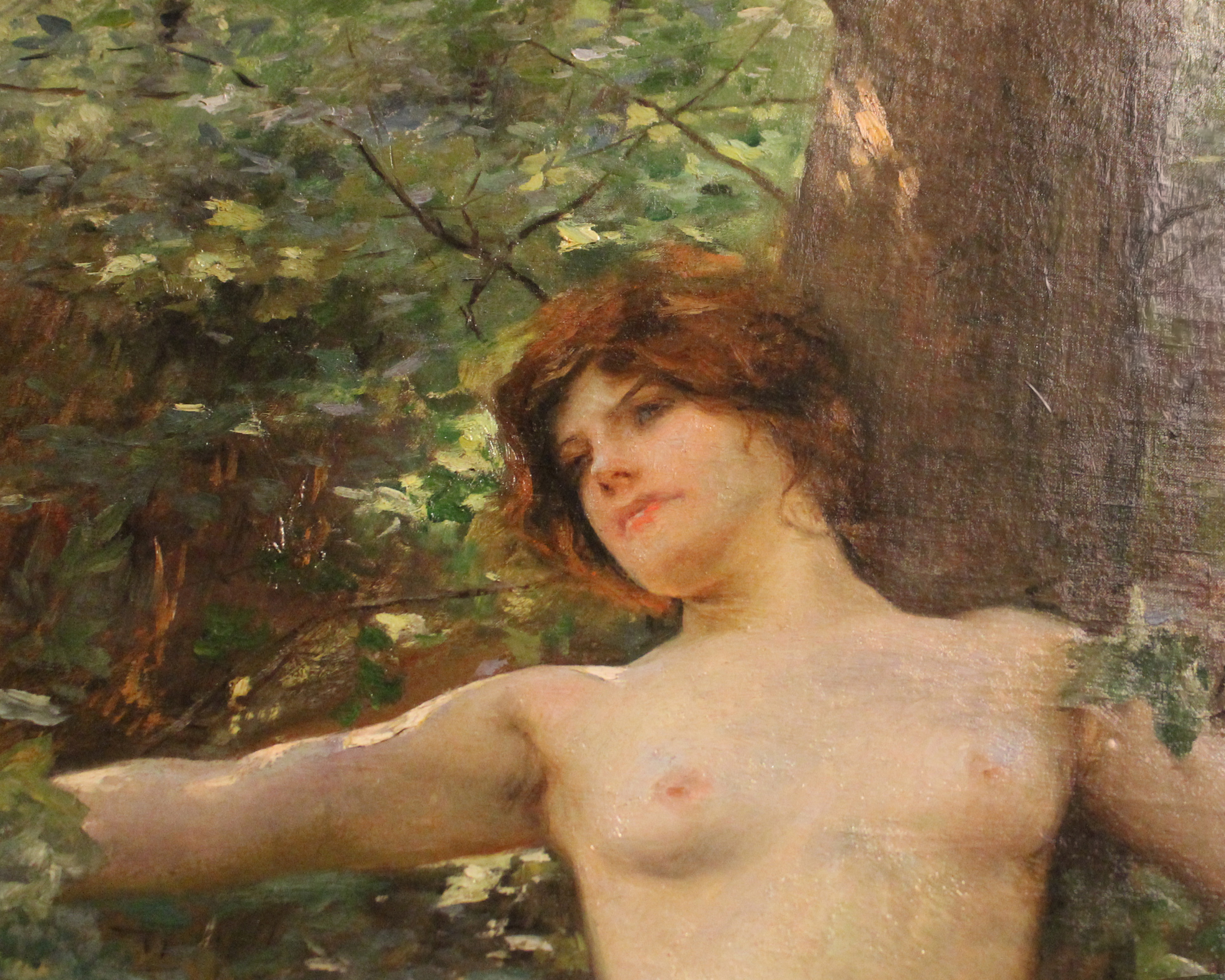 Stewart "was an American artist who spent his career in Paris. A contemporary of fellow expatriate painter John Singer Sargent, Stewart was nicknamed 'the Parisian from Philadelphia'." Unlike many artists, he didn't have to struggle, due to his families' wealth. "Stewart is best remembered for his Belle Époque society portraits and sensuous nudes." (From Wikipedia)
"In 1877, deeming the National Academy too conservative, a group of artists seceded to form the Society of American Artists; twenty years later, a group of artists seceded from that society for the same reason to form the Ten American Painters, better known as 'the Ten.' Reid was the youngest member of the group, and he is best known for the works he exhibited during the Ten's early years, such as Daffodils, which present a synthesis of Academic and Impressionist approaches. Of his style, Reid said,'If my work has any virtue and value, it is because it is mine and does not remind you of any other man's work, either French or American or other. It is of my time. If it has this quality, and suggests beauty, it is art.'" (From info card)
"With its avant-garde, artistic, yet timeless designs, the Wiener-Werkstaette-Stil influenced generations of architects and designers in the 20th century. The Bauhaus in Germany, Art Deco in America from 1920 to 1940, Scandinavian design from 1940-1960 (see for example Arne Jacobsen), as well as Italian design (see Mario Bellini) between 1960 and 1980, were all strongly influenced by the Wiener Werkstätte." (From Wikipedia) 
"Among the paintings exhibited at the 1893 Chicago World's Columbian Exposition was this work by Samuel Richards. A native of Indiana, Richards painted this image in Munich, Germany and described its sentimental subject matter, typical of many late 19th-century works, in a letter to its owner, David Gebhart: "It represents a Village maiden musing over her approaching wedding, busy with the last touches upon her bridal dress; You can see by the fresh made tea placed upon the table, and the chair placed near, that she is waiting for her lover who will come now any moment..." (From info card) We go from one interior scene featuring a sewing lady to another interior scene featuring ladies sewing. This one, however, is at night, brightened by the electrical lamps which in 1922 which was just beginning to be commonly used:
"The small town of Stockbridge has long been a thriving artist's community--Norman Rockwell often painted there--and as a summer retreat for wealthy individuals from nearby Boston." (From info card)
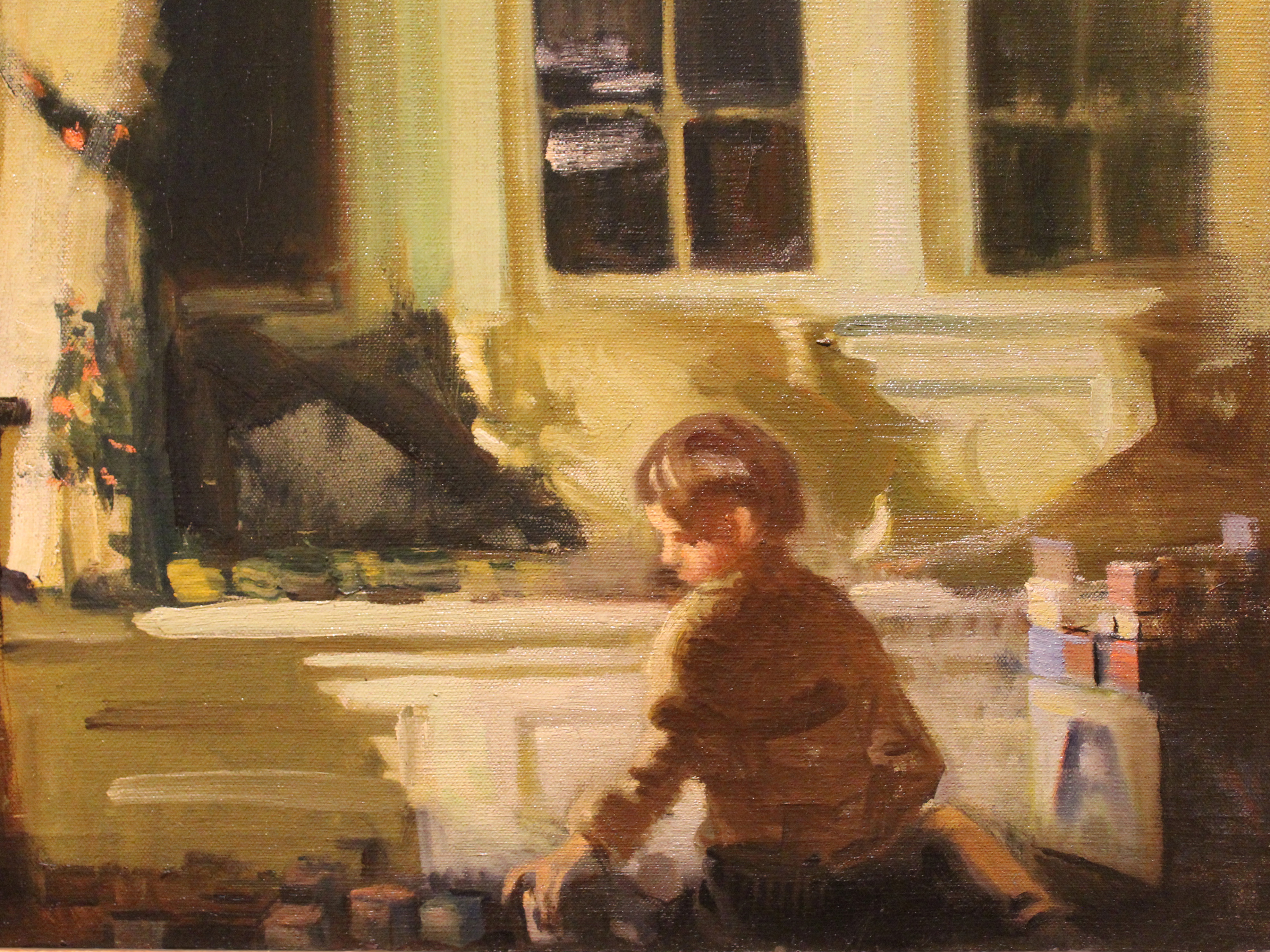
I will share more photos of artwork seen on my visit in the future!
|
Go Forward...
Go Back to Archives...
Go Back to Main Journal Index Page...
Go to Index of Joan's pages...
![]()
© Joan Ann Lansberry
